What is a Re-Engagement Email?
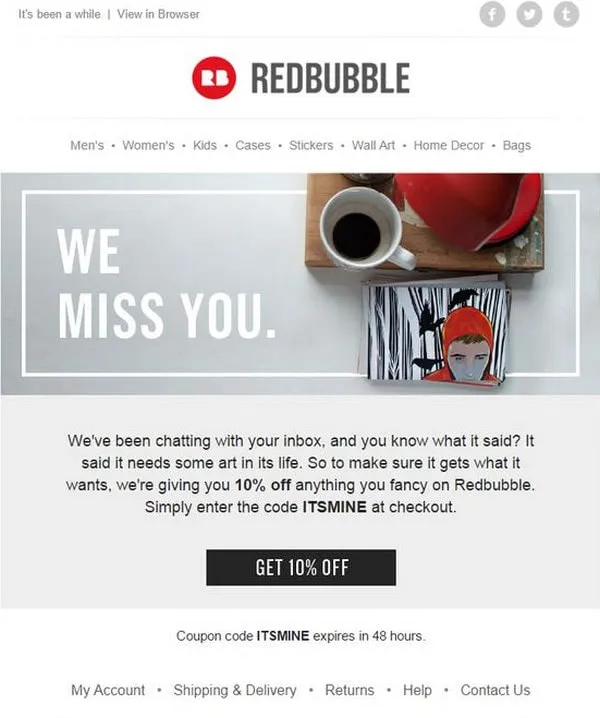
Re-engagement emails are a vital part of email marketing, designed to revive interest among subscribers who've become inactive. By offering exclusive deals, compelling content, and clear calls to action, these emails aim to rekindle the emotional bond with subscribers and prompt actions like updating preferences or making a purchase.
With engaging subject lines, they grab people's attention and help maintain a healthy sender reputation by reducing inactive user, boosting overall campaign effectiveness. These campaigns, including win-back offers and opt-out options, ensure your list remains vibrant and engaged, aligning with your overall marketing goals.
Why Should you Re Engage your Audience?
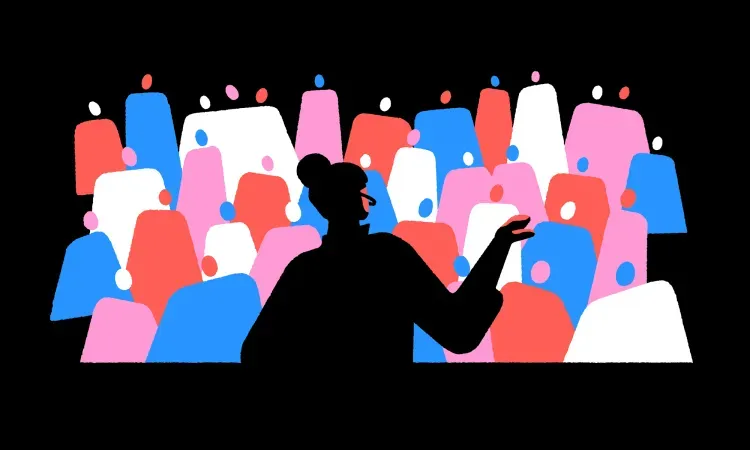
Re-engaging your audience is crucial for maintaining a vibrant and active subscriber base, especially when existing customers or subscribers stop engaging. Here's why:
- Revitalize Old Customers: Re-engaging breathes new life into relationships with old customers, reminding them of your brand's value and offerings.
- Boost Engagement: Follow-up emails after re-engagement can significantly increase interaction, the engagement email example turning passive viewers into active participants.
- Leverage Social Proof: Sharing success stories or testimonials in re-engagement emails can harness the power of social proof, encouraging others to re-engage based on positive experiences.
- Enhance Brand Reputation: Consistently engaging with your audience demonstrates commitment, fostering a stronger emotional connection and improving brand perception.
- Maximize ROI: Re-engaged customers can lead to increased sales and loyalty, making it a huge deal for your overall return on investment.
Role of Re-Engagement Emails in Retaining Subscribers
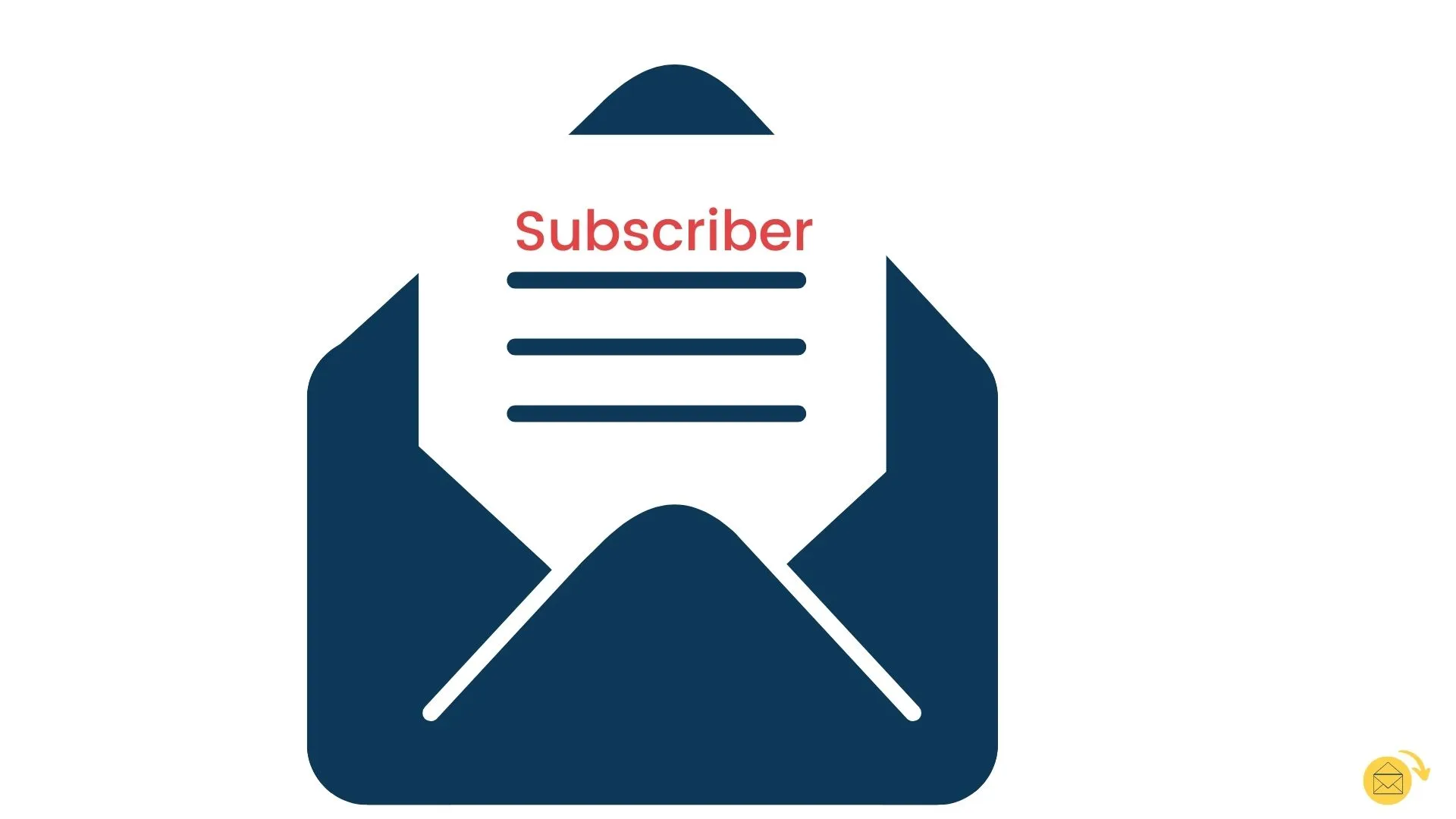
Reactivation email campaigns are key to rekindling interest among inactive subscriber and renewing their connection with your brand. They serve to:
Spark Interest Again: Re-engagement emails are crafted to capture the attention of subscriber, drawing them back with enticing glimpses of your brand's offerings.
Customized Outreach: Aimed at those who've drifted, these emails are tailored to benefits subscribers feel seen and valued, encouraging them to rediscover what they've been missing.
Catchy Email Subject Lines: The power of a re-engagement email lies in its subject line, designed to stand out in an inbox and compel subscribers to take a closer look.
Reignite Engagement: Recognizing the varied reasons subscribers may disengage, these emails offer targeted content or deals that resonate, prompting a renewed interest in your brand.
Bolster Overall Campaigns: Integral to your email strategy, re-engagement emails ensure every subscriber, no matter how inactive, has the opportunity to reconnect with your offerings.
14 Ways to Re Engage your Audience with Emails
"We Miss You" Email
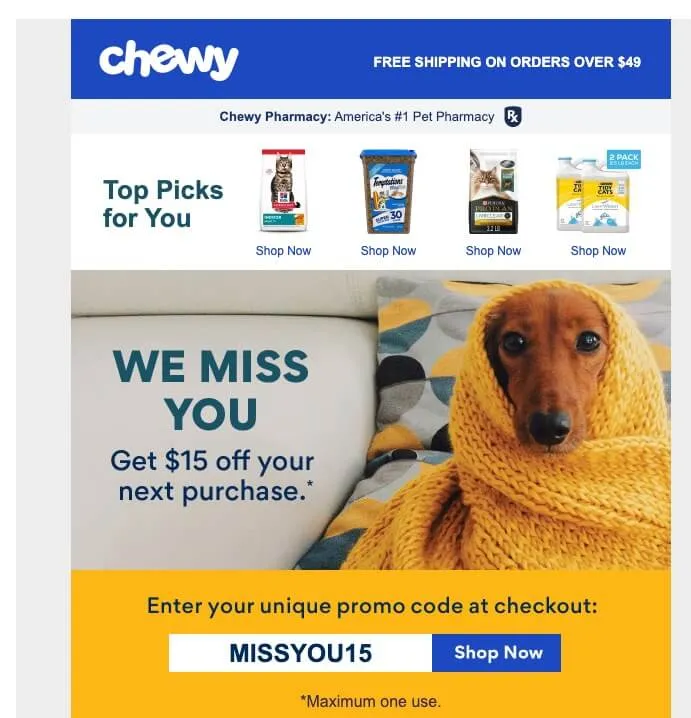
We Miss You" re engagement emails are designed by email marketers to re-engage subscribers who have lost interest or have not interacted with your brand for a while. These emails aim to reignite the emotional connection with a personalised touch. Miss you email examples -
Subject: We've Missed You, [Name]! Let's Reconnect.
Content: Hey [Name], we noticed you haven't been around lately, and we're missing your presence! Is there anything we can do to bring you back? Check out what's new!
Incentive-Based Emails
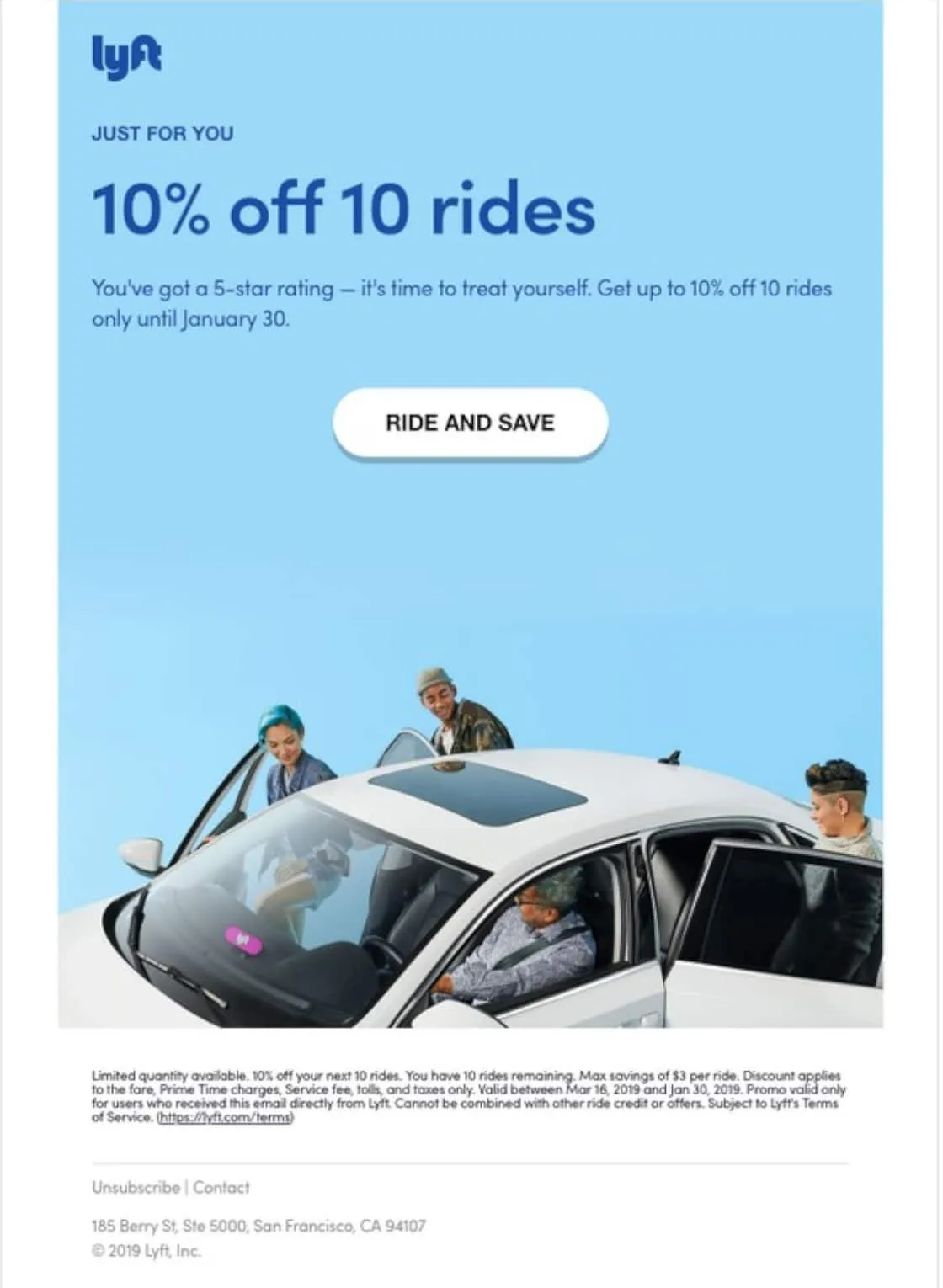
These emails entice inactive email subscribers to re-engage by offering a special discount, exclusive access, or a unique deal to encourage their interaction with your online store.
Subject: Here's a 20% Off Just for You!
Content: Welcome back, [Name]! We're offering you an exclusive 20% off on your next purchase. Dive back into our latest collections and enjoy this special deal.
Feedback Request Emails

Feedback request emails seek insights from inactive subscribers about their preferences or reasons for disengagement miss you email them, showing that their opinions are valued and considered in your marketing strategy.
Subject: Your Thoughts Matter to Us!
Content: Hi [Name], we've noticed you've been quiet lately. Could you spare a minute to tell us how we can improve your experience? Your feedback is crucial to us.
Account Update Reminders
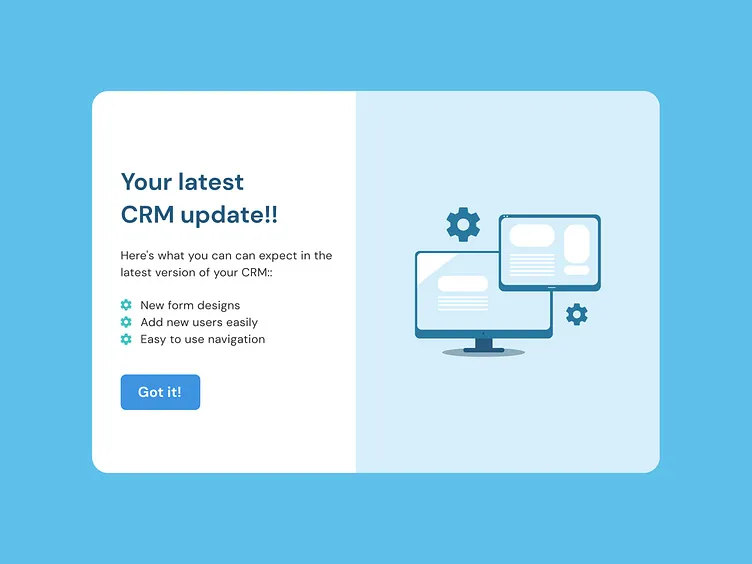
These emails remind subscribers to update their email preferences or account details, ensuring they receive relevant content and offers that match their interests and engagement style.
Subject: Is Your Account Up-to-Date, [Name]?
Content: Hey there! It's time to check your preferences and ensure you're getting exactly what you want from us. Update now to stay in the loop!
Newsletter Highlights or Digests
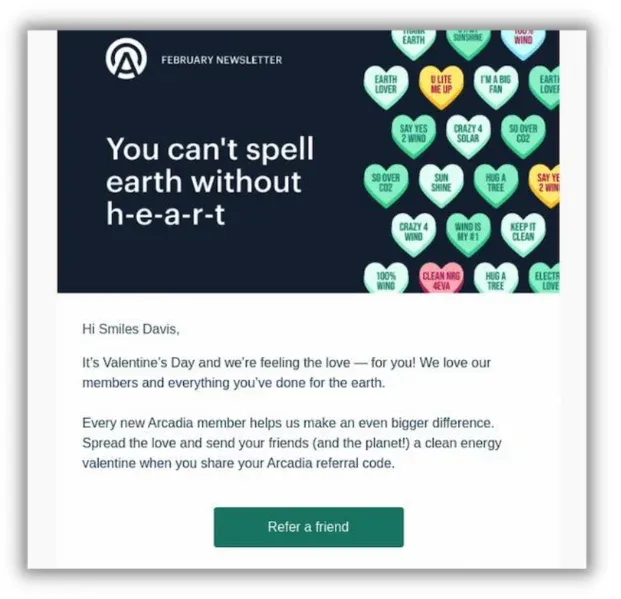
Summarize the most engaging or important content, updates, or offers you've had recently, providing a snapshot of what subscribers might have missed and rekindling their interest in your brand.
Subject: Catch Up on What You've Missed!
Content: Been a while, [Name]? Here's a quick digest of our top stories and offers you might have missed. Dive back in and stay connected!
Personalized Product Recommendations

Leveraging data on past behaviors or preferences, these emails offer personalized recommendations, making subscribers feel understood and valued, and potentially reigniting their interest.
Subject: Curated Just for You, [Name]!
Content: Based on your past favorites, [Name], we've handpicked these gems for you. Check them out and let us know what catches your eye!
Anniversary or Milestone Emails
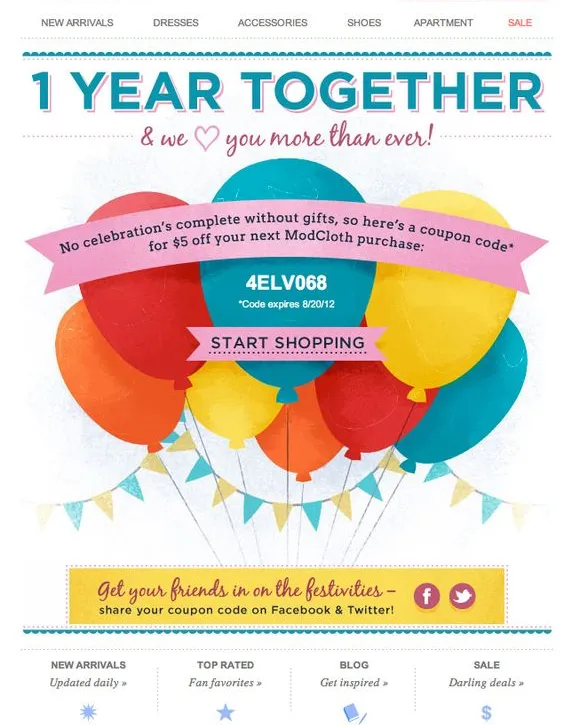
Celebrate the anniversary of the subscriber's sign-up or another relevant milestone with a special offer or message, reinforcing their valued status and encouraging continued engagement.
Subject: Happy Anniversary, [Name]! A Special Gift Inside.
Content: It's been a year since you joined us, [Name]! We're celebrating with a special gift just for you. Open up to discover your exclusive deal.
Reactivation Offers
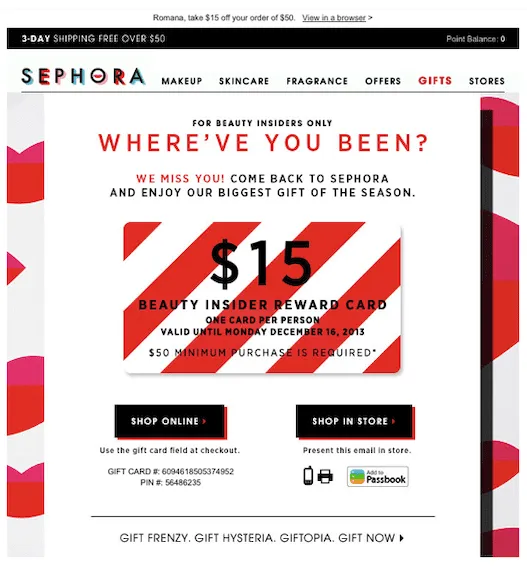
Targeting long-term inactive subscribers, these emails present an irresistible offer or incentive aimed at encouraging them to re-engage with your brand or make a purchase.
Subject: We Want You Back - Here's 30% Off!
Content: It's been too long, [Name]! We're offering you a 30% discount on your clothes purchase as a warm welcome back. Don't miss out on this exclusive deal!
Educational Content Emails
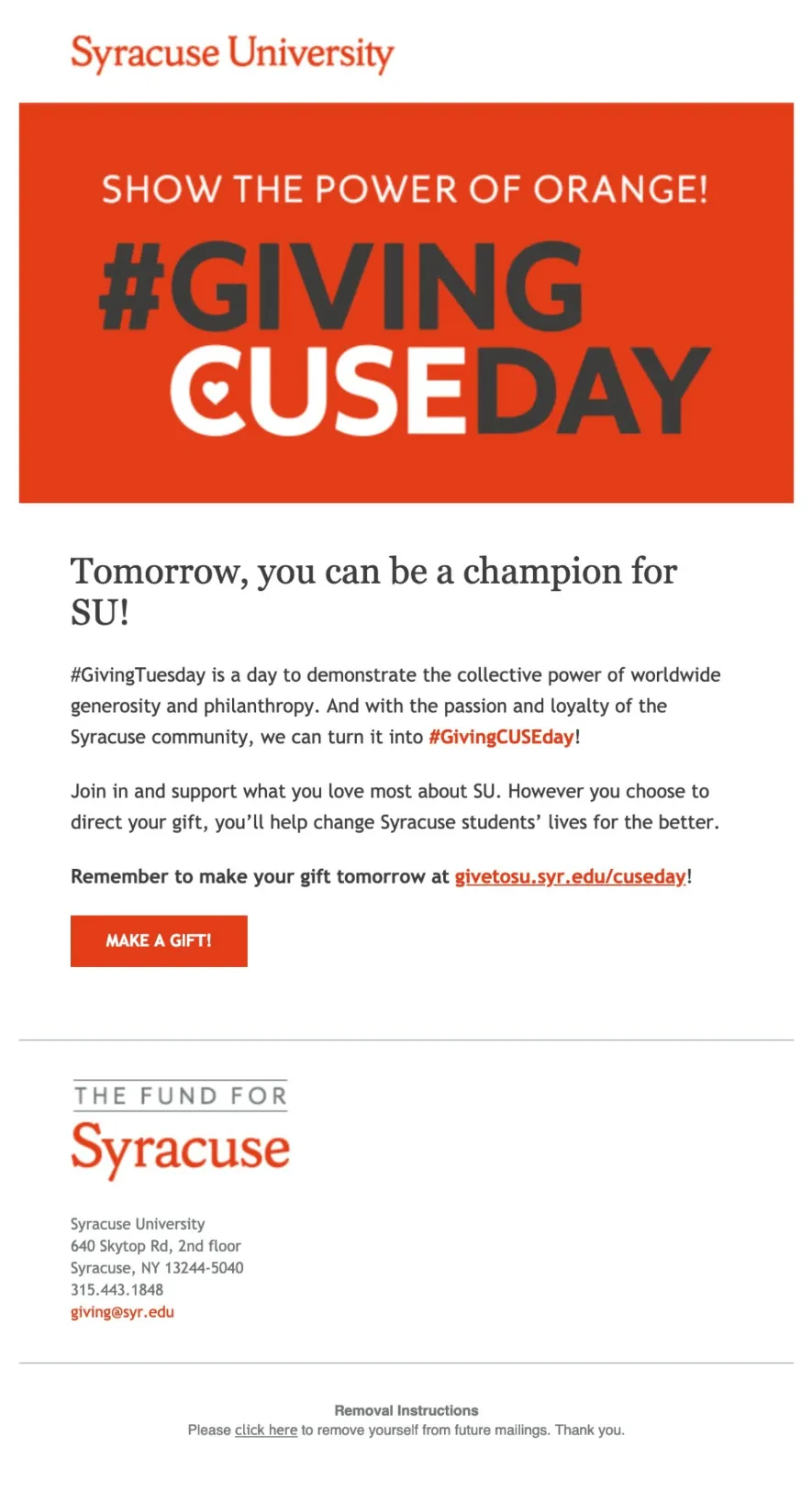
Share valuable tutorials, guides, or industry insights that can help subscribers get more from your products or services, positioning your brand as helpful and informative.
Subject: Master Your [Product] with These Tips!
Content: Ready to become a [Product] pro, [Name]? Check out our latest guide filled with tips and tricks to maximize your experience.
Survey or Poll Invitations

Engage subscribers by inviting them to participate in surveys or polls, making them feel involved in your brand's development and decisions.
Subject: We Value Your Opinion, [Name]!
Content: What do you want to see more of, [Name]? Take this quick poll and have your say in shaping our future offerings.
Event Invitations
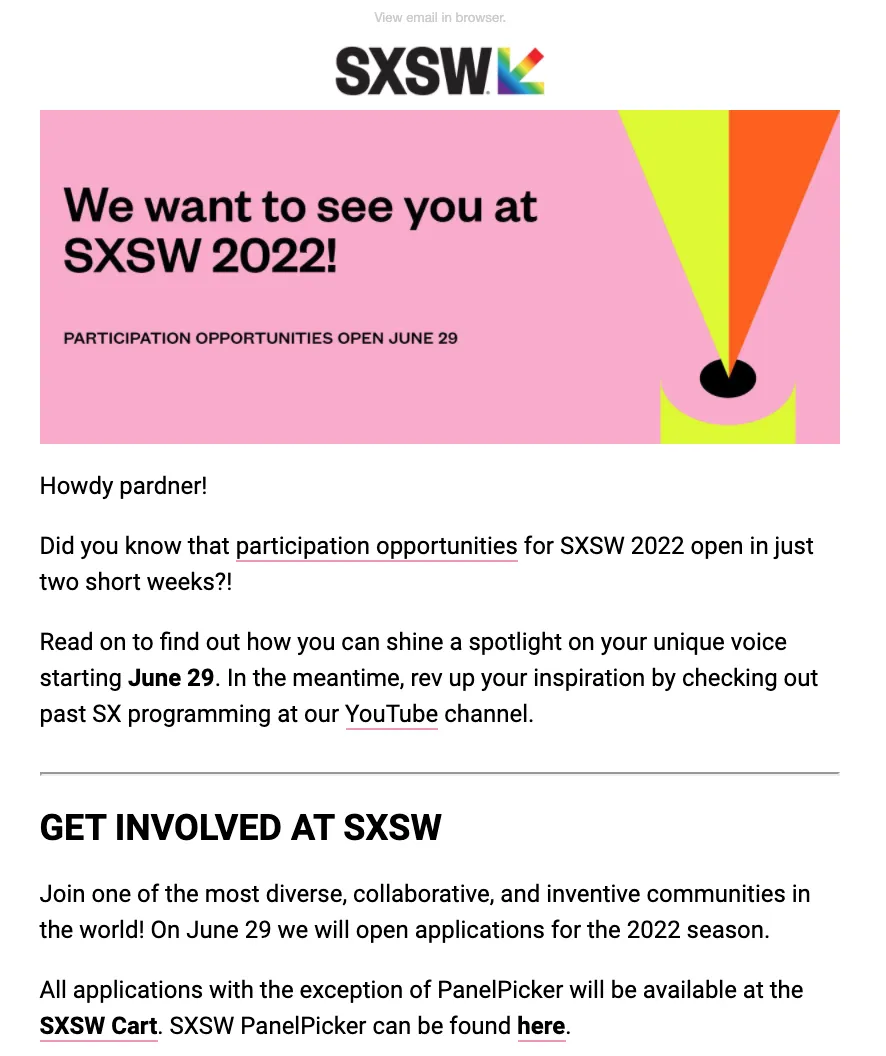
Event invitation emails are a powerful tool to re-engage subscriber by an engagement email inviting them to exclusive events, webinars, or workshops. These emails build community and offer a platform for real-time interaction, strengthening the bond with your brand.
Subject: Exclusive Invite: Join Our Live Masterclass!
Content: Hello [Name], you're invited to an exclusive live masterclass with our experts. Dive deep into [Topic] and rediscover what makes [Brand] special. Reserve your spot now!
New Feature Announcements

Announcing new features or updates through emails keeps your subscribers informed about the latest enhancements to your products or services. It demonstrates continuous improvement and can rekindle interest among inactive users.
Subject: Introducing Our Latest Feature - [Feature Name]!
Content: Big news, [Name]! We've rolled out [Feature Name] to make your experience with [Product/Service] even better. Check out how this new feature can enhance your [specific benefit].
“Last Chance” Notifications
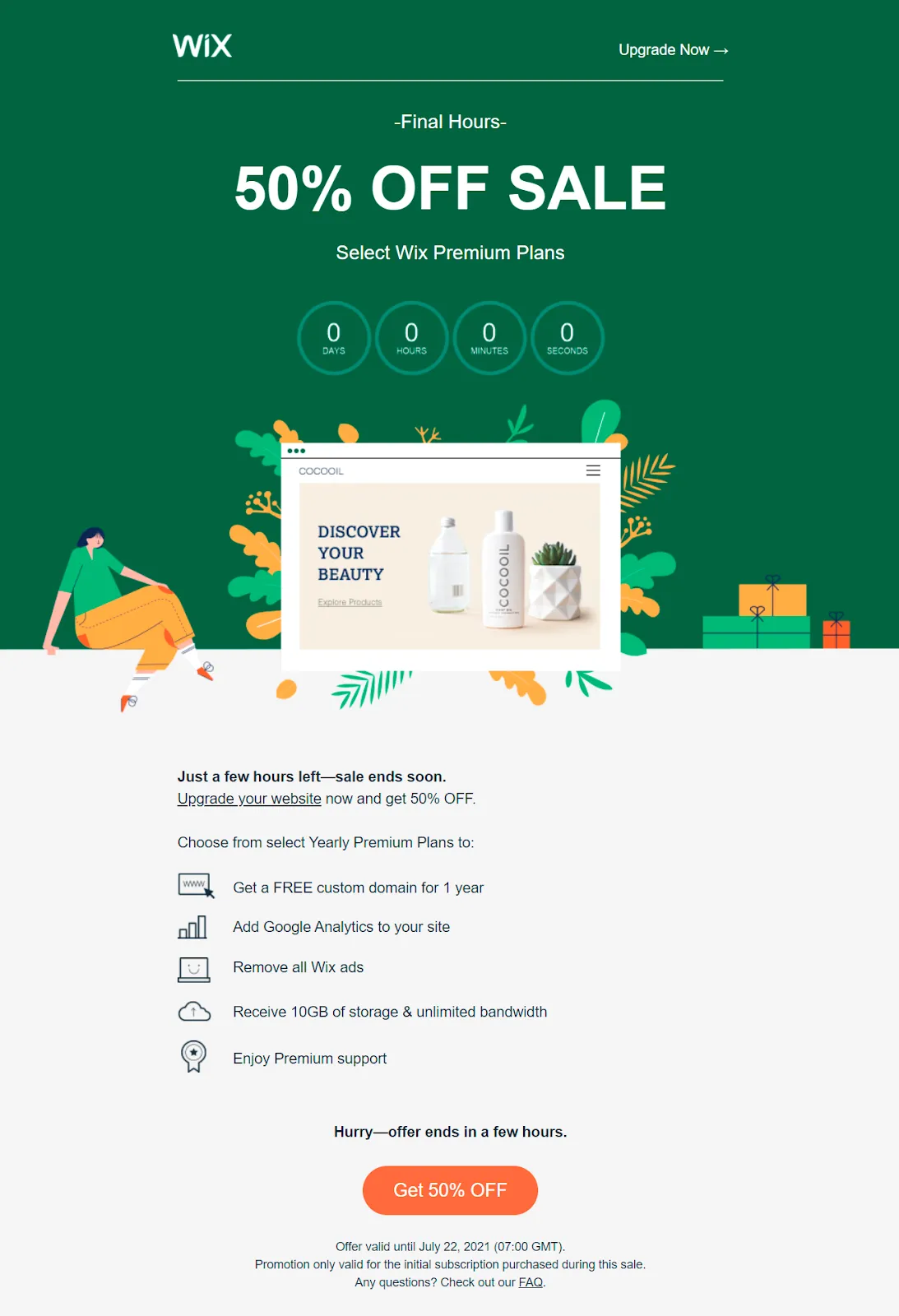
“Last Chance” emails create a sense of urgency more engagement, notifying subscribers about the impending end of an offer, deal, or event. This can motivate those who've been inactive to take immediate action and re-engage with your brand.
Subject: Last Chance, [Name]! Don’t Miss Out on This Offer.
Content: Time is running out, [Name]! This is your last chance to grab the [offer/deal]. Don't let this opportunity slip away – act now and make the most of it.
Interactive Emails
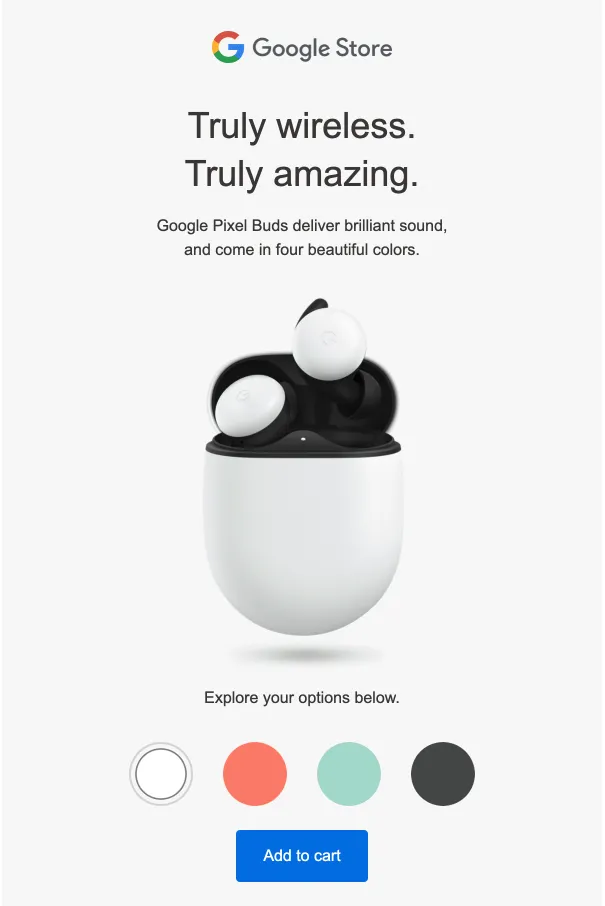
Interactive emails incorporate elements like quizzes, polls, or interactive graphics to engage subscriber directly within the email. This interactive content can significantly increase engagement and reinvigorate subscriber interest.
Subject: Have Fun & Tell Us What You Think!
Content: Hey [Name], let's have some fun! Take our quick quiz [or poll] and tell us what you think. Your input helps us tailor our offerings to suit you better, plus you might just discover something new!
10 Steps to Create a Successful Re-Engagement Campaign Through Email

Creating a successful re-engagement campaign involves a strategic approach to win back inactive customers and rekindle their interest in your brand. Here’s how to do it
Step 1: Identify Inactive Subscribers
Firstly, sift through your subscriber list to identify inactive customers. These are individuals who have not interacted with your emails for a significant period, such as opening or clicking through. Use your email marketing platform's analytics tools to segment these users effectively, setting the stage for targeted re-engagement efforts.
- Segment based on inactivity duration, such as 3, 6, or 12 months.
- Consider engagement metrics like open rates and click-through rates for segmentation.
Step 2: Define Your Goals
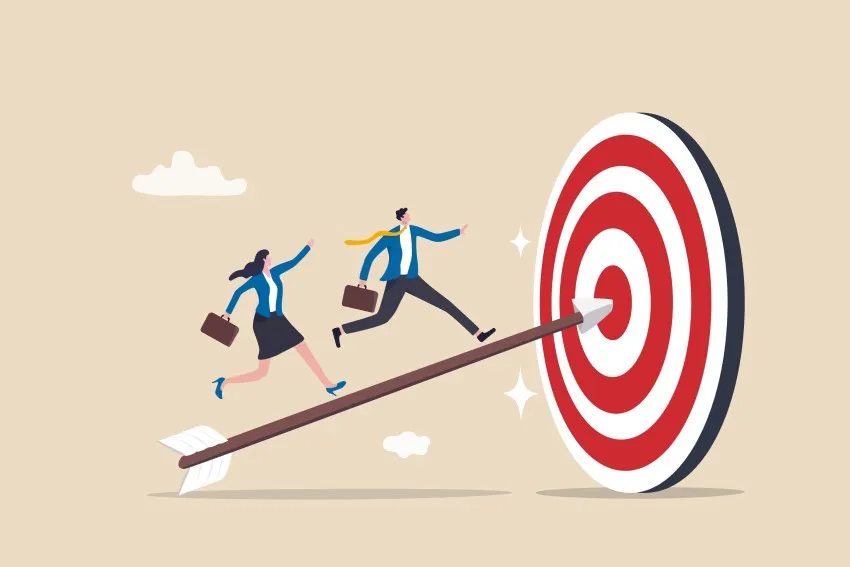
Clarifying your objectives is crucial for shaping your re-engagement strategy. Whether it's boosting open rates, enhancing click-through rates, or purifying your email list by removing unengaged subscribers, having specific targets will guide your whole campaign effort's direction and success measures.
- Aim to rekindle interest among subscribers who have lost touch.
- Set measurable goals like increasing engagement metrics by a certain percentage.
Step 3: Plan Your Campaign Strategy
Strategizing involves deciding on the type of re-engagement email to send, such as "miss you" emails or win-back emails offering considerable discounts. Plan the re engagement email sequence and timing of these send re engagement emails beforehand, ensuring they're spread out to avoid overwhelming your subscribers.
- Start with a heartfelt "miss you" email to re-engage on an emotional level.
- Include clear calls to action in each email, guiding subscribers on the next steps.
Step 4: Craft Compelling Content
The content of your re-engagement email should be compelling and resonate with your inactive subscribers. Personalize the messages to reflect the recipient's previous interactions with engagement email examples from your brand, and ensure the subject lines are enticing enough to prompt an open.
- Personalize emails with the subscriber's name and past activity.
- Craft subject lines that grab attention and spark curiosity.
Step 5: Design for Engagement
Your email's design should be visually appealing and reflect your brand's identity. Ensure it's optimized for mobile devices, and consider including interactive elements like social media icons to offer alternative engagement paths.
- Use responsive design to ensure readability across devices.
- Incorporate engaging visuals and an easy-to-find CTA button.
Step 6: Offer Incentives
Incentives can be a powerful tool to entice subscribers back into the fold. Consider offering exclusive discounts or access to premium content as a way to reignite their interest in your brand.
- Offer a considerable discount or an exclusive deal as a welcome-back incentive.
- Highlight the value of the incentive in both the subject line and the email content.
Step 7: Test and Optimize
Continuous testing and optimization are key to refining your re-engagement email strategy. Conduct A/B tests on various elements of your emails, from the the subject line and lines to the content and layout, to identify what resonates best with your audience.
- A/B test different subject lines and email content to find the most effective combination.
- Analyze performance metrics to identify areas for improvement.
Step 8: Follow up
Encourage re-engagement efforts be a one-off; follow up with subscribers who show renewed interest. This could involve sending further personalized content, email examples, updates on new products, or additional incentives to fully re-engage them with your brand.
- Send a sequence of follow-up emails to gradually re-engage subscriber.
- Adjust the content based on the subscriber's response to previous emails.
Step 9: Clean your Email List
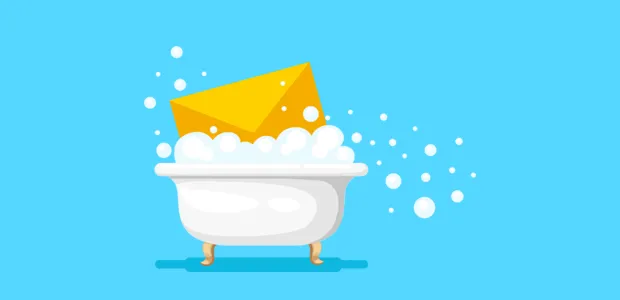
After your campaign, it's important to clean your email list by removing subscribers who remain inactive. This helps improve your sender reputation and ensures your engagement metrics more accurately reflect your active audience.
- Regularly remove subscribers who lose interest and do not engage even after re-engagement attempts.
- Maintain email list hygiene to enhance overall campaign performance.
Step 10: Reflect and Learn
Finally, take the time to reflect on the next campaign effort's outcomes. Analyze what worked and what didn't, using these insights to refine your approach for future re-engagement efforts. Learning from each campaign is crucial for ongoing improvement and success.
- Review campaign analytics to gauge success against your defined goals.
- Document learnings to apply to future re-engagement email campaigns.
4 Tips For Creating a Campaign that can Re Engage Inactive Subscribers

1. Identify and Segment Inactive Subscribers.
To kick off your email re-engagement campaigns effectively, start by identifying and segmenting your inactive subscribers. This involves a deep dive into various aspects of your inactive subscriber' data to ensure you're targeting the right individuals with the right message.
- Look at the Demographics: Understand the age, location, and other demographic details of your inactive subscribers to tailor your re-engagement efforts more precisely.
- Peek into the Behavior: Analyze past interactions, such as email opens, clicks, and website activity, to gauge the level of inactivity and potential reasons behind it.
- Don't Forget Psychographics: Consider the attitudes, interests, and values of your subscribers. Understanding their psychographics can help evoke the desired emotional response through personalized content.
2. Determine Email Send Frequency/time.
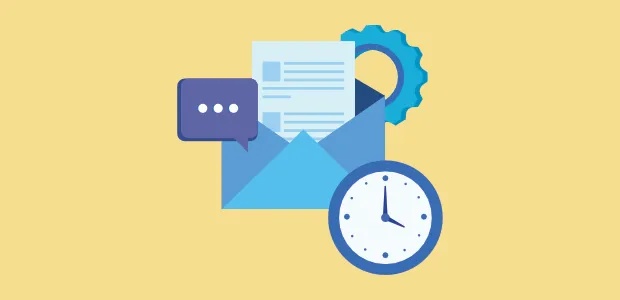
Deciding on the optimal frequency OF EMAIL and timing is crucial for re-engaging subscribers without overwhelming them.
- Email Frequency: Adjust email frequency based on past engagement levels and current communication preferences to avoid subscriber fatigue. A gradual increase in frequency might be necessary as engagement picks up.
- Send Time: Optimize send times based on when your subscribers are most likely to engage, which might vary significantly across different segments.
3. Design your Re-engagement Email.
The design of your re-engagement email should be compelling, clear, and aligned with your brand's identity, ensuring it stands out in your subscribers' inboxes.
- Craft an Engaging Subject Line: The subject line is your first opportunity to recapture the attention of inactive subscribers. Make it compelling and personalized to spark interest.
- Incorporate a Strong Call to Action: Your email should include a clear, concise call to action (CTA) that guides subscribers towards the next step, whether it's updating their preferences, taking advantage of a special offer, or simply reconnecting with your brand.
- Use Social Media Icons: Embedding social media icons can provide alternative channels for engagement, catering to the varied communication preferences of your subscribers.
4. Test Your Emails.
Testing is a critical step in refining your re-engagement strategy and ensuring your emails resonate with your target audience.
- A/B Testing: Experiment with different elements of your email, from the subject line and content to the layout and CTA placement. This helps identify what triggers the best response and engagement from your inactive subscribers.
- Adjust Based on Feedback: Use the insights gained from testing to continually adjust your email frequency, content, and design, optimizing for the best possible re-engagement results.
Best Practices for Writing a Re Engagement Email

Ask your Recipients Why They've been Ignoring you
Initiate your re-engagement campaign by gently inquiring why your customers have disengaged. An effective re-engagement email can open the door for feedback, providing valuable insights that can help refine your email marketing strategy.
- Use a friendly and understanding tone.
- Encourage honest feedback to understand their needs better.
Make your Subject Line Stand Out
The subject line is your first impression. To re-engage customers, it needs to grab their attention and stand out in a crowded inbox.
- Craft subject lines that evoke curiosity or offer value.
- Personalize where possible to add a touch of relevance.
Direct Recipients to a Preference Center
Allowing recipients to adjust their frequency of email and content preferences shows that you value their comfort and engagement.
- Include links to a preference center in your engagement emails.
- Make the process of updating preferences straightforward and user-friendly.
Leverage Incentives and Offers
Incentives can be a powerful tool in a win-back email, enticing customers to re-engage with your brand.
- Offer exclusive discounts or special access as part of your re-engagement campaign.
- Ensure the offers are compelling and relevant to their interests.
Show that You value Your Contacts
Demonstrate the importance of every subscriber in your re-engagement emails, reinforcing their value to your brand.
- Acknowledge their missed presence and express your desire to stay connected.
- Personalize the message to make them feel recognized and valued.
Get Emotional
Creating a connection can significantly impact the effectiveness of your re-engagement campaign.
- Use storytelling or share user experiences that resonate with your audience.
- Evoke nostalgia or highlight positive memories associated with your brand.
Ask questions

Engage your audience by asking questions that prompt them to think and respond, increasing interaction.
- Use open-ended questions related to their preferences or experiences with your brand.
- Encourage replies to foster a two-way conversation.
Include a CTA to click if they still want to hear from you
A clear call to action (CTA) is crucial in guiding what you want the inactive subscribers to do next.
- Be explicit about the action you want them to take, whether it's browsing new products, taking advantage of an offer, or simply confirming their interest in your emails.
- Make the CTA prominent and easy to find.
Provide an opt-out option
Giving subscribers an easy way to opt-out respects their choice and helps maintain the health of your email list.
- Ensure the process is straightforward and respects the subscriber's decision.
- Consider asking for a reason for opting out to gather more insights for future improvements.
Summarizing Key Takeaways

To wrap up, email campaign effort are crucial for reconnecting with inactive subscribers and revitalizing your email list. Here are the condensed essentials:
- Frequent Use: Employ re-engagement emails multiple times to effectively rekindle interest among inactive subscribers.
- Personalization Matters: Customizing re-engagement emails boosts engagement by making content relevant to the recipient's preferences.
- Clear Calls to Action: Ensure every re-engagement email includes a direct CTA, guiding subscribers on the next steps to take.
- Learn and Adapt: Draw insights from successful engagement email examples to refine your approach and enhance campaign effectiveness.
In short, strategic re-engagement emails are key to maintaining an active, engaged subscriber base, ultimately supporting the success of your broader email marketing efforts. Don't be a low quality sender and Do not forget to incorporate the learning article provided you in your next campaign effort.







